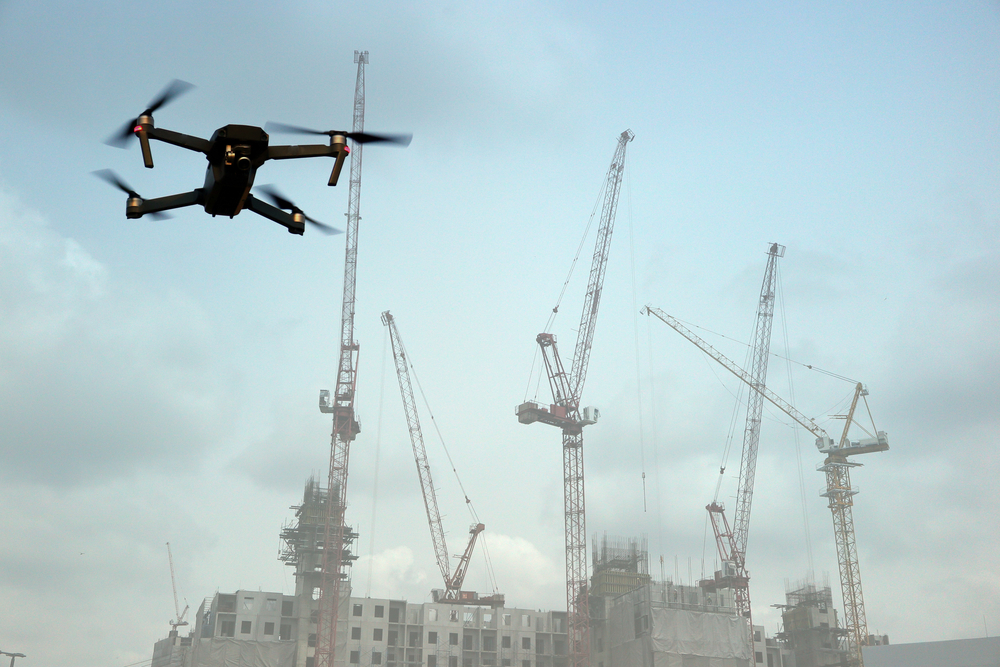The impact of technology on future infrastructure planning
Posted 17/04/2019 by Valery Olefir

Technology is constantly changing the way engineers design and build large infrastructure projects. Increasingly, it has the power to impact how we plan and analyse them too.
For most of the industrial age, technology helped improve major construction projects in predictable ways. Machines became bigger and more powerful. They made building faster or cheaper – or both.
This is still the case. Today, robots are building houses (of which more later). However, in the last few years the biggest technological change has centred less on heavy machinery and more on metrics. It's now possible to gather vast data sets around an infrastructure project to improve efficiency and foster innovation.
This changes the fundamentals for investors and planners. They can use new tools to make modelling and analysis far more effective and accurate than before.
Technology is disrupting the infrastructure planning market in four key ways. Let's explore how.
1. Gathering preparatory data
Every major project requires planners to analyse vast data sets. That used to be an immense undertaking. Today, less so. Take traffic modelling. Not so long ago, it was complex and expensive to map millions of journeys. Stakeholders would conduct driver surveys, and exhaustively review footage from traffic cameras in order to make assessments about throughput.
Today, much of this data collection can be commoditised. Every driver has a phone, and every phone tracks journeys with GPS. Planners can therefore tap into open data sets for minimal outlay – and the data will be far richer than ever before. Managers can use the resultant insight to make operational decisions. They can also explore commercial opportunities such as deciding where to locate facilities based on the times and locations of maximum throughput. This data is already used to develop complex traffic models and identify behavioural patterns on road and rail projects across the Americas and Europe. Both project sponsors and lenders have come to rely on this new data source in their project assessments.
2. Monitoring a project's progress
Once a project is under way, developers as well as lenders need to track its progress in order to maintain the integrity of their investment. This is another area that technology is transforming.
Take the example of automated photography in construction. A time lapse film gives planners a unique opportunity to review progress. It condenses months of development into a few minutes. But think about how difficult that would have been just 10 years ago. Cameras were (relatively) primitive, storage was expensive, batteries were weak, connectivity limited.
Today, thanks to technological advances, time lapse video is easy. Project managers can install a rugged hi-spec camera on a site. It will have enough memory for thousands of photos, and a battery that releases a charge only when needed. The camera will probably house a 'machine to machine' SIM card so it can connect to a remote dashboard. From there, a human operator can monitor the footage and change the settings if necessary.
Drones have made a similar impact. Indeed, PwC says capital projects and infrastructure account for $45.2bn of the $127bn drone market. Drones can capture footage from previously inaccessible perspectives. They can collect data with a degree of accuracy previously unknown in the industry. Planners can take this footage and use CAD tools to create topographical maps to help them monitor stockpiles of costly building materials. In so doing, they can cut costs and limit delays.
3. Changing the construction process
Technology clearly changes the way in which planners model and monitor projects. Can it also change how constructors build them? Recent developments show that it can, with engineers making huge advances in autonomous construction. In other words: robot builders.
In fact, it has taken a surprisingly long time for robotics to infiltrate the construction industry. Robots are best suited to reliable repetitive tasks in controlled environments - and building sites are unpredictable places. However, technology is slowly overcoming these challenges. 3D-printing robots are starting to build the component parts of many projects. The first ever 3D printed bridge was recently built in the Netherlands, for example.
And there are many rudimentary tasks that robots can increasingly handle: demolition, remote control rescue, tunnelling, bricklaying. Indeed, Fastbrick Robotics Hadrian X bot can cut and place up to 1,000 bricks per hour.
While there is concern in some quarters about the impact of robotics on human labour, proponents argue that autonomous equipment will also help managers recruit and train employees quickly. This should help to address the shortage of skilled labour facing the construction industry.
4. Opening up new revenue streams
Question: when is a road building project no longer a road building project? Answer: when it's a power generation project. Over the last 10 years, technologists have been exploring the idea of replacing asphalt roads with solar panels that have built-in heat and LED lights. Effectively, the concept puts transportation, power, and grid infrastructure in the same place.
Although the idea is mostly theory (although France opened what it says is the world’s first solar panel road in a Normandy village in 2016), it does indicate the extent to which technology can transform the nature of an infrastructure project. This has ramifications for everyone. Investors need to consider the possibility of new income streams. Government must weigh up the fiscal costs and benefits. To stick with this solar road example, what would be the impact on other power generation sources?
Of course, advances in technology can only go so far. Tools can't make decisions. That is for human experts to do. At Infrata, we blend the insights we extract from big data with many decades of experience. We then make judgements to mitigate the risk and maximise the value of your infrastructure project. We have done this for more than 200 major projects in 40 countries with a total value of $75bn.
For more details contact Valery Olefir [email protected].